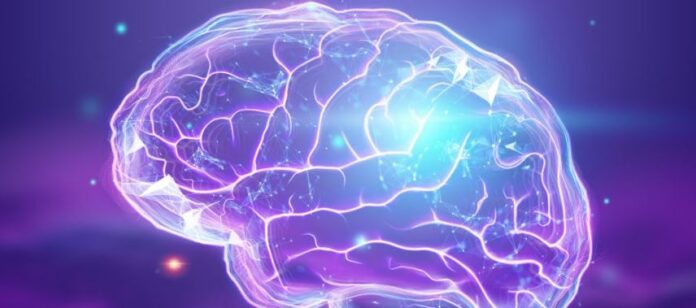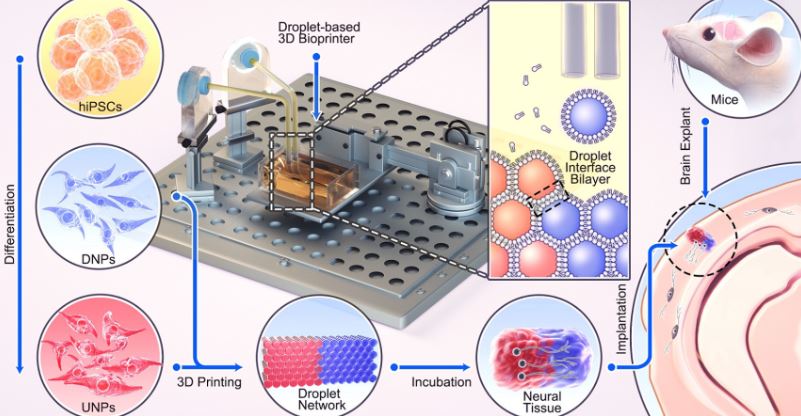
Oxford University researchers have made a breakthrough which opens the door to 3D printing technology usage in brain injury treatments. Scientists have developed a way to deploy neural cells as 3D-printed parts to mimic the cerebral cortex structure.
The Oxford scientists published the results of these 3D printed parts usage in neural cell delivery in a Nature Communications paper called ‘Integration of 3D-Printed Cerebral Cortical Tissue into an ex vivo Lesioned Brain Slice’.
Most brain injuries like trauma, stroke and brain tumor surgery damage the cerebral cortex which is the outer layer of the human brain. This affects our cognitive abilities like reading, writing or thinking along with body movements and communications.
One of the lead authors of the study Dr Yongcheng Jin from the Department of Chemistry said that “this marks a significant step towards the fabrication of materials with the full structure and function of natural brain tissues”.
Dr. Jin further explained how it will help scientists to understand the “workings of the human cortex” better and provide long-term hope to individuals suffering from brain injuries.
Every year 70 million people suffer from traumatic brain injury or TBI. Around 5 million of these cases are fatal with no effective treatments in sight. With the help of 3D printing technology, there’s hope of repairing these brain injuries.
Earlier, tissue regenerative therapies showed how neural cell implants derived from the patient’s own stem cells can help in treating brain injuries. However, in the absence of any method to deliver these stem cells in a way that they can mimic the structure of the brain, developing treatments became impossible.
With Oxford scientists using 3D printed parts to mimic the brain structure that barrier has been broken and neural cells can be easily deployed to treat brain injuries.
Devicing the experiment and monitoring the 3D-printed tissues
The Oxford University researchers created a two-layered brain tissue by 3D printing human neural stem cells and then implanted this into mouse brain slices to check if the 3D printed implants were structurally and functionally integrating into the mice tissue.
The scientists used human induced pluripotent stem cells (hiPSCs), a type of stem cell which can be derived from patients. Hence, they are not recognized as foreign bodies by the patient’s immune system, preventing any chance of reactions.
The Oxford scientists then let the hiPSCs divide and grow into neural progenitor cells to create the two layers of the cerebral cortex. After the neural cells had fully grown into tissues under the influence of specific growth factors and chemicals, they were suspended in solution to generate two ‘bioinks’, which were then 3D printed to produce the two-layered structure.
The 3D printed parts or the 3D printed tissues maintained their cellular structure for weeks which was observed by the expression of biomarkers ingrained in the layers
When the Oxford University researchers implanted these 3D printed tissues into the mouse brain slices it integrated perfectly, demonstrating the normal neural processes like migration of neurons across the implant-host boundary. The implanted 3D-printed tissues also displayed signalling activity in line with the mouse cells which showed that they have structurally and functionally integrated into the system.

The scientists are looking to build on this mice study and use the droplet printing technique to create a multi-layered cerebral cortex 3D printed tissues that can mimic the human brain structure and integrate into it.
Speaking about the matter, Senior author Dr Linna Zhou said that “droplet printing technique provides a means to engineer living 3D tissues with desired architectures, which brings us closer to the creation of personalized implantation treatments for brain injury”.
Professor Zoltán Molnár from the Department of Physiology explained that using this method doesn’t mean scientists are recreating the entire mechanism in the laboratory. Through 3D printing we can control ” the fates and arrangements of human iPSCs to form the basic functional units of the cerebral cortex”.
Future scope of medical applications 3D printed tissues
Apart from treating brain injuries, 3D-printed tissues could be used in drug evaluation and brain development studies. This new research builds on the decade-long work of inventing and patenting 3D printing technologies to manufacture synthetic tissues and culture cells.
Associate Professor Francis Szele from the Department of Physiology said that “the use of living brain slices creates a powerful platform for interrogating the utility of 3D printing in brain repair. It is a natural bridge between studying 3D printed cortical column development in vitro and their integration into brains in animal models of injury”.
As part of the Oxford Martin Programme on 3D Printing for Brain Repair, scientists Linna Zhou, Luana Soares, Francis Szele, Zoltán Molnár, and Hagan Bayley are identifying ways to use 3D printing technologies to generate a low-cost medical technology to address brain damage caused by trauma and disease.
Remember, you can post job opportunities in the AM Industry on 3D ADEPT Media free of charge or look for a job via our job board. Make sure to follow us on our social networks and subscribe to our weekly newsletter : Facebook, Twitter, LinkedIn & Instagram ! If you want to be featured in the next issue of our digital magazine or if you hear a story that needs to be heard, make sure to send it to contact@3dadept.com





